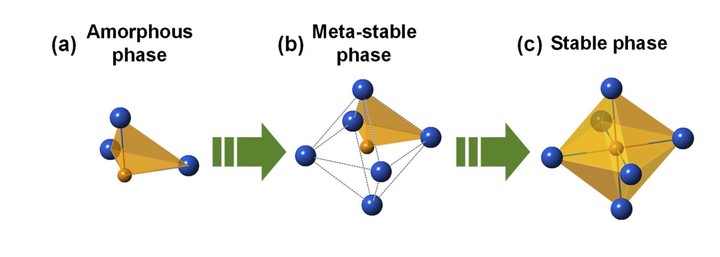Cr-Triggered Local Structural Change in Cr₂Ge₂Te₆ Phase Change Material
 Image credit: Unsplash
Image credit: UnsplashAbstract
Cr₂Ge₂Te₆ (CrGT) is a phase change material with higher resistivity in the crystalline phase than in the amorphous phase. CrGT also exhibits ultra low energy switching to the amorphous phase. The origin of the increased resistance in crystalline CrGT compared to amorphous CrGT and the underlying phase change mechanism were investigated in terms of both local structural change and associated change in electronic state. The phase change from amorphous to crystalline CrGT occurred through a metastable crystalline phase with a local structure similar to that of the amorphous phase. Cr nanoclusters were confirmed to exist in both the amorphous and crystalline phases. The presence of Cr nanoclusters induced Cr vacancies in the crystalline phase. These Cr vacancies generated hole carriers, leading to p-type conduction. Photoelectron spectroscopy of the Cr 2s core level clearly indicated a decrease in the fraction of CrCr bonds and an increase in the fraction of CrTe bonds in crystalline CrGT upon annealing. Meanwhile, the coordination number of the Cr nanoclusters decreased as the number of CrCr bonds was reduced. Together, these results imply that the origin of the increased resistance in crystalline CrGT is the filling of Cr vacancies by Cr atoms diffusing from Cr nanoclusters.